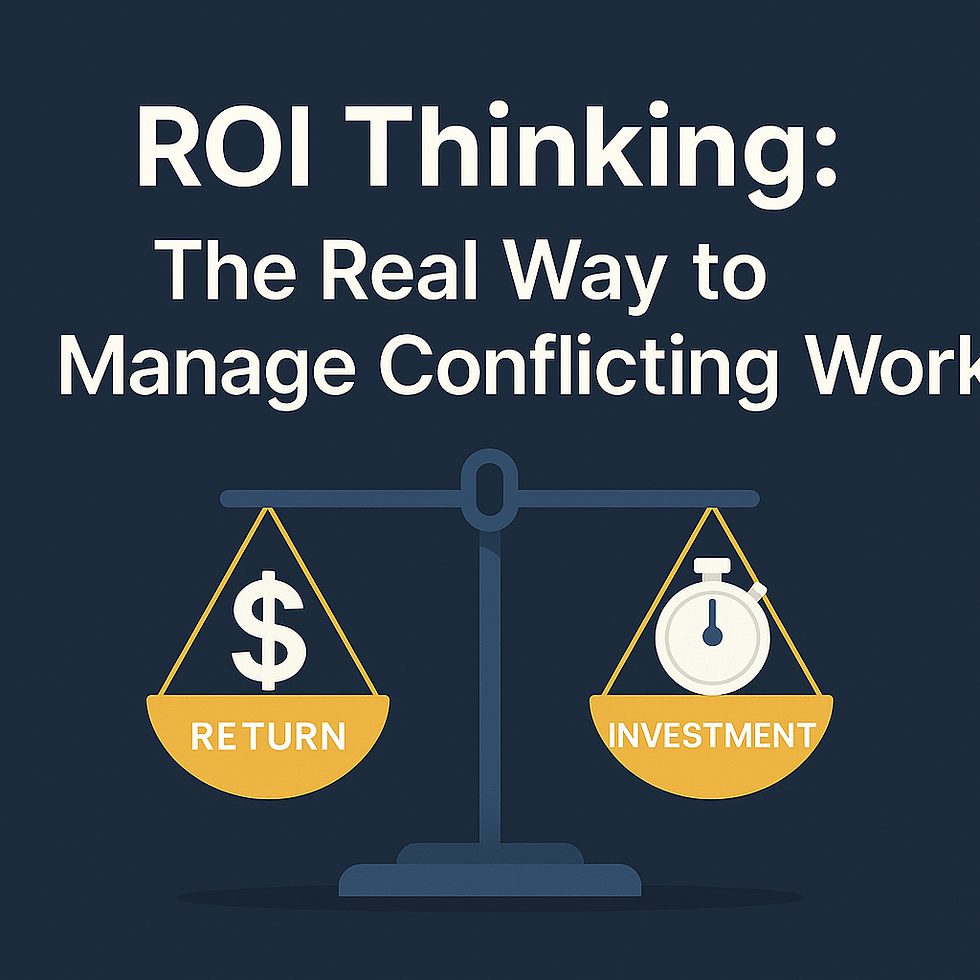Don’t Ship Features. Solve Problems: The Must-Haves in Every Jira Story
- Admin
- Apr 18
- 3 min read
Updated: Apr 28

Too many development teams operate on autopilot. A Jira ticket comes in. It says: “Add this field,” “Create that validation rule,” “Build this flow.”
So developers do exactly that—without ever asking the fundamental question:
Why?
What problem are we solving? What is the business doing today without this? What will improve because of this?
These are the kinds of questions that elevate your role from task-taker to solution designer.
The Sprint Anti-Pattern: Blind Implementation
In the real world, here’s what often happens:
Jira tickets lack depth
There is no product owner grooming the backlog
Business users suggest the solution directly (not the problem)
Developers start implementing only to discover missing context halfway through
And yes, things get done. But what’s lost is impact. What’s lost is alignment with the actual business pain.
Start by Asking the Right Questions
Whether you’re working in Salesforce or any other system, here are two essential questions every engineer should ask before picking up a ticket:
1. How is the business operating today without this feature?
This reveals the workaround or hidden process—like spreadsheets, manual emails, or unused Salesforce fields.
2. What KPI or outcome will this change improve?
This helps tie the solution to business metrics—such as better conversion rates, faster case closures, improved reporting accuracy.
These two questions help you anchor the work in purpose. They change how you estimate, how you collaborate, and how you gain trust.
Business Should State the Problem, Not the Solution
In many teams, business users do this:
“We need a new field called XYZ”
“Please create a validation rule for ABC”
“Can you build a flow that does DEF?”
Instead of taking these at face value, shift the conversation:
Ask:
What are you trying to prevent or track?
Why now? What changed in the process?
Could we reuse an existing field that’s no longer being used?
When engineers start asking these questions, they start creating better solutions—not just more features.
Think Beyond the Obvious
Example: A business user asks for a new field. But if you check and realize that another field exists with the same intent but barely used, maybe it can be repurposed.
Or maybe they ask for a validation rule. But after probing, you realize it needs to be dynamic based on record type, and a simple validation won’t cut it. You may suggest a flow, a screen component, or might realize you got to involve the downstream team for impact.
.
It’s your job as an engineer to assess many questions such as:
Will this scale?
Is there a cleaner path?
Will this collide with future needs or introduce tech debt?
The Jira Story Must-Haves
Every Jira story should ideally include these (and if not, the engineer should fill in the gaps):
Problem Statement: What’s broken or missing today?
Current Behavior: How is this handled today (if at all)?
Proposed Outcome: What should the system do after this change?
Why Now?: What changed that makes this story urgent?
KPI/Impact: What business metric does this tie into?
Constraints: Are there field limits, team constraints, or rollout deadlines?
Open Questions: What still needs to be clarified before implementation?
Should we update historical data?
What quick value we provide - always segregate even as little as small Jira story or a PRD, you can split into things which you can provide quick value and which needs more time to solve.
These aren’t optional—they’re what transform tickets into meaningful units of work.
Become a Partner, Not Just a Developer
When engineers consistently ask deeper questions, they:
Gain the trust of the business
Catch design flaws early
Propose faster, leaner solutions
Reduce rework
And ultimately, solve real problems—not just deliver code
This is how you stop being seen as a backend implementer and start being seen as a thought partner.
Final Thought
If there’s one principle that should guide every sprint, it’s this:
Don’t ship features. Solve problems. Provide solutions.
Ask why. Design intentionally.
Deliver value—not just velocity.


Comments